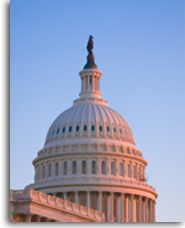This morning brings the sad news that Hunter S. Thompson, the sage of Gonzo Journalism, has died at 67, of an apparent self-inflicted gunshot wound at his home in Woody Creek, Colorado.I never had the chance to meet Thompson, and haven’t paid much attention to his writings since the early 1980s, but at his peak, he was without peer as a improvisational writer on subjects ranging from politics to drugs to pro football, to–well, to nearly every subject touching on his tortured vision of the American Dream. Any blogger who hasn’t read Thompson is arguably missing the originator of the medium’s distinctive style, long before the internet. Fear and Loathing on the Campaign Trail, his brilliant account of the 1972 presidential campaign, reads a lot more like a long series of blog posts than any kind of print journalism report. And all his earlier books, from Hell’s Angels through The Curse of Lono, are worth reading and re-reading.Thompson’s career also represents a cautionary tale about the cost of celebrity–a celebrity he seemed to endure rather than pursue. At one point Thompson was planning another Fear and Loathing book about the 1976 presidential campaign, but abandoned it, because, as he told an interviewer: “It’s hard to cover a campaign as an Outlaw Journalist when you’re getting more attention than the candidates…. I can thank friend Trudeau for that.” He was referring, of course, to the Uncle Duke character in Doonesbury, based not-so-loosely on Thompson, which destroyed any sort of casual privacy for its model once and for all. And that’s also probably why Thompson’s later writings seemed often to read like self-parody.But his genius is without question, and in the welter of drugs and gunplay and sexual assault charges that appear to have marked his declining years, I can only hope he never lost his touching, almost naive faith in the possibilities of America “as a monument to the human race’s best instincts”–a faith that fueled his rage at the “greedheads” who betrayed those possibilities.So: here’s to Doctor Gonzo’s memory, and I guess the only proper way of commemorating his passing is to hunker down somewhere, light up a King Marlboro, shrewdly rip the pop tops off a six-pack of beer, and read his remarkable prose.
TDS Strategy Memos
Latest Research from:

Editor’s Corner
By Ed Kilgore
-
March 6: Trump Job Approval Again Underwater, Where It Belongs
As an inveterate poll-watcher, I have been waiting for the moment when Donald Trump’s job approval numbers went underwater, his accustomed position for nearly all of his presidential career. It arrived around the time he made his speech to Congress, as I noted at New York:
Even as he was delivering the most partisan address to Congress maybe ever, Donald Trump’s public support seemed to be regularly eroding. An updated FiveThirtyEight average of Trump’s approval ratings on March 4 (released just as news broke that ABC was shutting down the revered data site) showed him going underwater for the first time since reoccupying the White House, with 47.6 percent approval and 47.9 percent disapproval. That puts Trump back in the same territory of public opinion he occupied during his first term as president, where (per Gallup) he never achieved more than 50 percent job approval, and averaged a mere 41 percent.
Perhaps Trump will get lucky and conditions in the country will improve enough to validate his agenda, but it’s more likely that the same sour public climate that overwhelmed Joe Biden will now afflict his predecessor and successor.
The Reuters/Ipsos survey that pushed Trump’s numbers into negative territory showed a mood very different from the 47th president’s boasts about a new “golden age” for our country:
“Thirty-four percent of Americans say that the country is headed in the right direction, compared to 49% who say it is off on the wrong track. When it comes to several specific issues, Americans are more likely to say things are off on the wrong track than going in the right direction: cost of living (22% right direction / 60% wrong track), the national economy (31% right direction / 51% wrong track), national politics (33% right direction / 50% wrong track), American foreign policy (33% right direction / 49% wrong track), and employment and jobs (33% right direction / 47% wrong track).”
So all the hype about Trump being a popular president who was in the midst of engineering a major realignment of the American electorate is already looking more than a bit hollow. Trump has a solid Republican base of support and a solid Democratic opposition, with independents currently leaning towards the Democratic Party on most issues. Perhaps Trump’s agenda will gain momentum and support, but since he’s not trying to reach out beyond his party’s base at all, he’s going to need a lift from Americans who only voted for him in 2024 as the lesser of evils and may not vote in the 2026 midterms at all.
At present Trump has lost whatever presidential “honeymoon” he initially enjoyed after his return to the White House, and needs to find new converts to return to genuine popularity. He’s not off to a great start.


